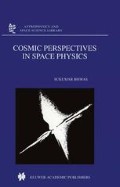Abstract
The phenomenon of the magnetism of the earth was known in ancient times, but its nature remained obscure for many centuries. When Queen Elizabeth-I ruled England in the 16th Century, her personal physician, William Gilbert, spent his spare time for studying magnetism. He shaped a load-stone in the form of the earth, which he called ‘ terrella’ and found that the magnetic forces on its surface were distributed somewhat similar to that of the earth. This led Gilbert to propose that the earth resembled a giant magnet and that a small and powerful bar magnet placed near the center of the earth in roughly northsouth direction would roughly reproduce the behavior of the compass needle on the earth’s surface. Explorers and navigators found that the compass needle did not point to the north pole, but to another direction at some distance from it. Edmund Halley-of the famous Comet of Halley-made long sea voyages in the North and South Atlantic during which he made systematic studies of the displacements of the compass needles with respect to the north-south axis of the earth and this led to the discovery of magnetic poles. Halley also noted the connection between the disturbances of earth’s magnetic force and the appearance of the aurora. The Swedish physicist A. Celsius recorded in 1741, the observations that a bright aurora was accompanied by a large displacements of compass needle indicating the disturbed nature of the earth’s magnetic field. In later years and in the first half of the twentieth century, improved magnetometers with higher sensitivities were developed and the properties of the earth’s magnetic field on the surface of the earth were measured in various locations. These measurements included the total intensity-its magnitude and direction, the horizontal component of the magnetic field, the declination (the angle between the direction of the horizontal component and the north-south direction on the surface of the earth), the inclination (the angle between the direction of the total intensity and the local vertical) and their variations with time-periodic and non-periodic modes and both in short as well as long time scale. These observations led to the fundamental properties of the terrestrial magnetism. (See e.g. Chapman and Bartel’s book on Geomagnetism).
Access this chapter
Tax calculation will be finalised at checkout
Purchases are for personal use only
Preview
Unable to display preview. Download preview PDF.
Author information
Authors and Affiliations
Rights and permissions
Copyright information
© 2000 Springer Science+Business Media Dordrecht
About this chapter
Cite this chapter
Biswas, S. (2000). The Magnetosphere of the Earth. In: Cosmic Perspectives in Space Physics. Astrophysics and Space Science Library, vol 242. Springer, Dordrecht. https://doi.org/10.1007/978-94-011-4651-7_2
Download citation
DOI: https://doi.org/10.1007/978-94-011-4651-7_2
Publisher Name: Springer, Dordrecht
Print ISBN: 978-94-010-5963-3
Online ISBN: 978-94-011-4651-7
eBook Packages: Springer Book Archive

